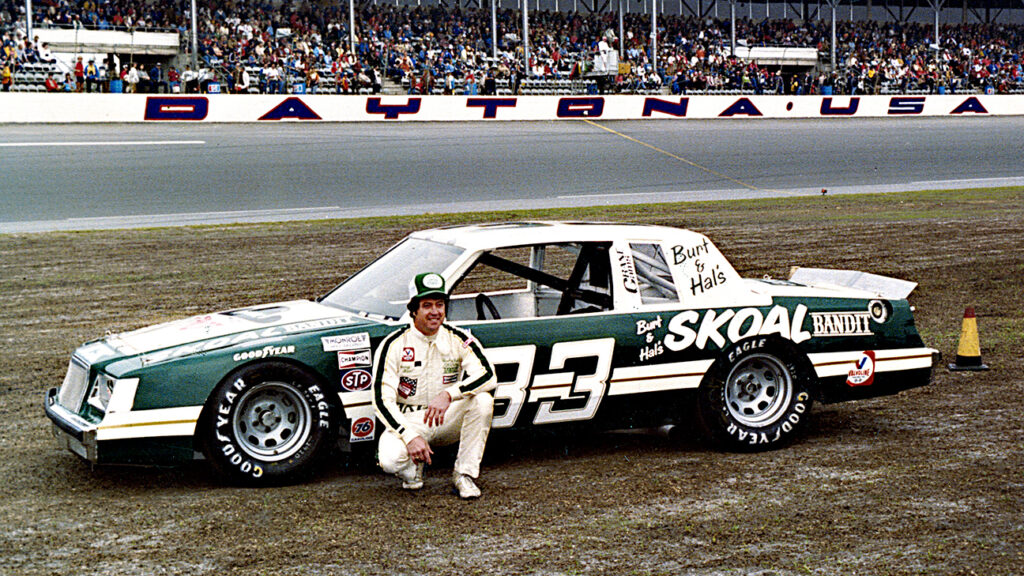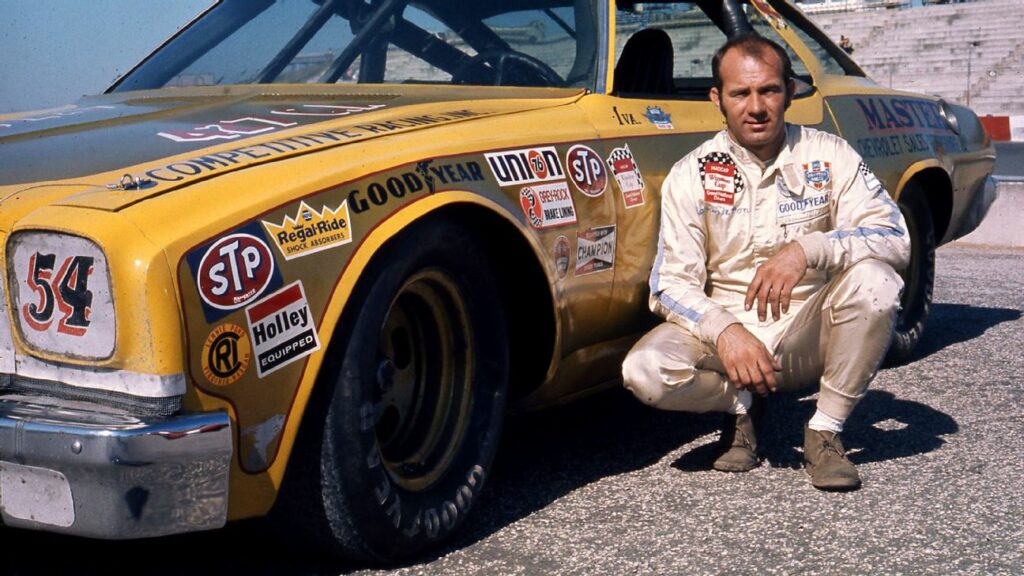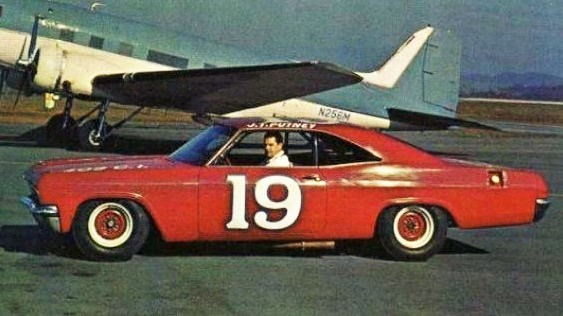So Daytona is a’comin’ and faster than we realize, less than four weeks away from when this is being written. Are you looking forward to it like in the old days? Would you prefer that elements of it were like they were back-in-the-day?
Let’s think about that.
The Track
Would you like it to be like it was from 1949-58, on the beach-road course? Let’s face it: that was kind of a freak show, racing nearly two miles on sand (with the ocean getting closer every lap), plus turns of sand that went well beyond the definition of treacherous. Then you ran the better part of two miles down a two-lane highway, far too narrow for real racing.


It’s incredible to me that the beach-road course never had a fatality in a Grand National/Cup race (there were a couple in modified-sportsman races), so it arguably was much safer than the current track, where fatalities were far too common until recent years.
With that caveat, would you go back to sand-and-asphalt?
The Brands
While we’re on the subject of the beach-road course, how about going back to the first Strictly Stock (the original name of the Cup series) in 1949, when there were NINE different makes of automobile in the 28-car field? A lot of people seem to be tired of Chevy/Ford/Toyota and would like somebody else out there, although Stellantis/Fiat/Dodge’s decision to pass on a return to NASCAR shouldn’t have been surprising, given that the brand doesn’t even outsell Tesla in actual CARS.


The problem, of course, is that a new manufacturer wouldn’t really get to race it’s own car, because everything on the track is really a NASCAR, not a Chevy, Ford, or Toyota (but that’s a rant for another day).
I guess, then, that the question is whether you want to go back to the days when stock car racing was STOCK – CAR – RACING.
Oh, never mind.
The Numbers
Let’s talk about numbers, not just brands. Would it be more fun if you had 60 cars trying to qualify for those 40 starting spots? In 1960, there were 77 cars in the two qualifying races (with a couple more cars failing to make it onto the grid). There also were eight different brands, by the way.
Maybe it’s just me. Maybe the race fan of tomorrow wants to see race cars that have nothing to do with what we drive and that – mostly – are guaranteed starting spots in the race because they have country club memberships (oops, make that charters).


OK, you might well say, pull out a bunch of stripped-down showroom cars, run ‘em at much slower speeds, kill a few people with the absence of safety precautions, and take away all the money (so you have to be there in person or watch it on streaming – no broadcast or cable TV). Is that what you want?
Of course not. Anything I say about turning back the clock doesn’t apply to safety. I made that clear in noting that as a reason Justin Marks’ idea of racing old-but-restored cars – even as an exhibition, that might be prohibitively hazardous.
Otherwise, yes, I’m game. Take away the money. Take away the spectacle that requires me to watch/listen to Fox broadcast crews and have drivers be unapproachable, because they have to cater to sponsors first.
I’ve said it before. I attend and/or watch more local weekly racing these days because it’s an open sport, where anybody with more mechanical/technical ability than me (which is to say, ANYBODY) can give it a go. The vehicles are affordable, and at least some of the drivers still hang around and talk with fans after the race.
My kind of people.
My kind of sport.
(NOTE: The drivers pictured through this article are those I’d like to see racing next month. No offense to the current Cup crop, but my heroes date back a ways . . . and some of them never won a Daytona 500. “On the cover,” by the way, are David Pearson, maybe the best of all time, and Tony Stewart, who was both a top driver and a throwback to the days before driver development programs.)

(PHOTO CREDITS – Nearly all of these pictures were the typical publicity shots taken each year at Daytona and sometimes Darlington. I could tell you where I got them off the web, but their origins surely go back much farther, and either NASCAR or the speedways deserve original credit, I’m pretty sure. The exception is the J.T. Putney shot, but I have no idea of its origin, either. The copies online were on Twitter, eBay, and the like, meaning somebody else just copied it like I did.)
Frank Buhrman



Back in the day there was little to match the thrill of watching an “independent” charge to the lead past the “factory” drivers. Today, even the backmarker teams and drivers are plenty wealthy. I’ll always miss the days when the local hero made the field in a 1-off against the big boys. Everything seems overscripted today.
You know, back in the day I decided to be a Richard Petty fan but changed my mind after I was told he was always so fast because he had a sponsor who gave him a lot of money to make sure he was usually the fastest. That is when I decided I had no use for STP. We had some crazy ideas. Three of us girls decided that STP must mean Stop Tomcat Pee. Can you imagine how we laughed at that?
Seriously, no, I would not like to turn back the clock. I would have missed so much if I did, don’t you think? Yes, I liked the racing back then, but through the years a lot has changed and we along with it. I just wish I had made it to more tracks. Seems like there are so many back East and I should have traveled more to see some of them. Oh well, we can’t turn back the clock, but we can still dream, thank goodness!
Good reading, thank you, Frank!